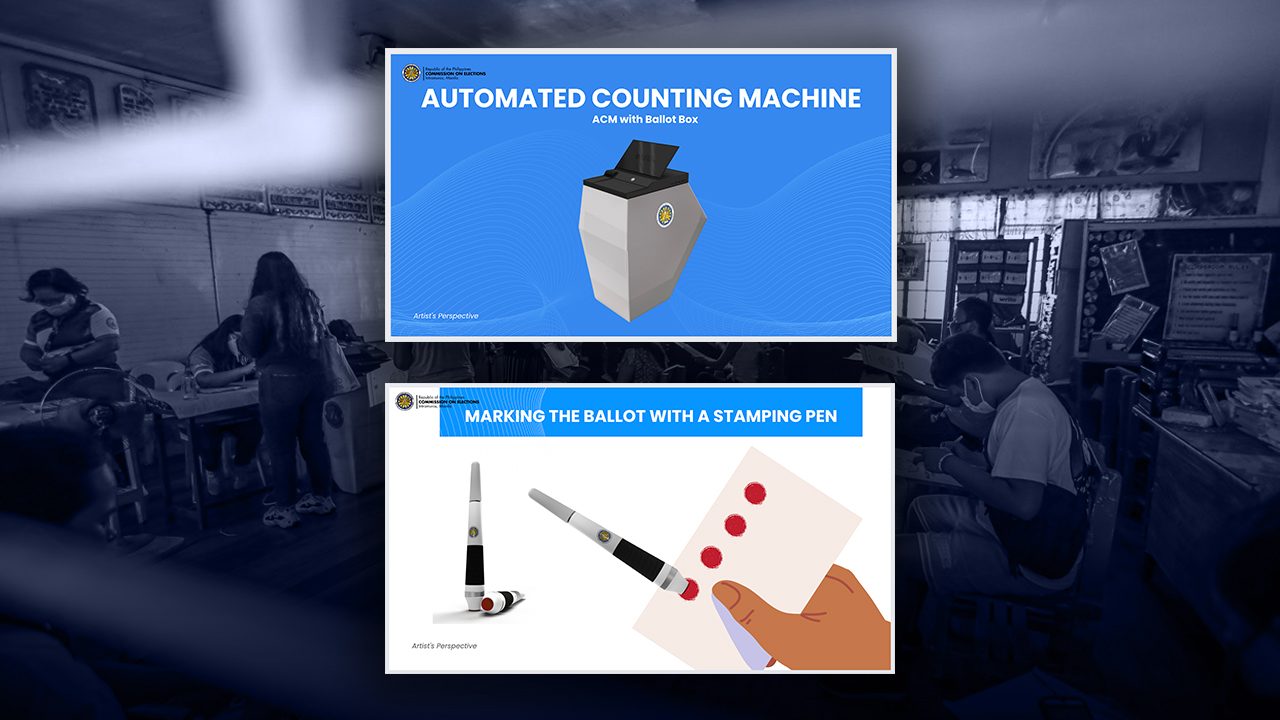SUMMARY
This is AI generated summarization, which may have errors. For context, always refer to the full article.

MANILA, Philippines – The Commission on Elections (Comelec) has made public its proposed blueprint for the 2025 automated elections. Even without a ballpark figure yet from the poll body, the unprecedented changes put forward would surely require substantial funding from Congress.
“Our policy direction is FASTrAC, [which stands for] Fully Automated System with Transparency, Audit, and Count,” Comelec Chairman George Garcia said on Thursday, May 4.
From the type of machine that the Comelec wants, to transmission changes, here is a rundown of the ambitious automation reform agenda of the poll body – which it fondly calls a “wish list” – for the fast-approaching midterm polls.

‘VCMs’ out, ‘ACMs’ in
The Comelec under Garcia’s leadership has been insistent on retiring the more than 97,000 vote-counting machines (VCMs) that the Philippines has relied on since 2016.
Over 1,000 of these machines malfunctioned in 2022, providing for an inconvenient voting experience for tens of thousands of Filipinos on election day.
For 2025, the Comelec is looking for a manufacturer that would be willing to provide new equipment, which would no longer be called VCMs but automated counting machines (ACMs).
ACMs have feature to cast vote directly on screen
Existing VCMs in the Philippines are optical mark readers (OMRs), wherein voters use a paper ballot counted by machines.
The Comelec wants the ACM to still be an OMR, but with direct recording electronic (DRE) capabilities. In a DRE setup, voters use a touch screen or touch pad.
For 2025, the Comelec wants the DRE touchscreen voting option available for persons with disabilities and for illiterate voters. A limited rollout of the feature could also be utilized by Filipinos taking part in local absentee voting (LAV) or overseas voting.
ACMs would show ballot image, count on screen
The ACM would still print a voter receipt, which a person could check to determine whether their ballot was read accurately by the machine. But, in addition to that, the machine would scan the ballot and display its image one by one on screen after the transmission of election results.
The poll body said this gives the electoral board, watchers, voters, and the public a chance to “visually inspect and manually verify the votes cast by viewing the ballot images (front and back) displayed on screen.”
The Comelec said this would add a layer of transparency and address voters’ doubts on whether the machine really tallied their votes properly even though the voter receipt showed the machine read their ballots correctly.
ACMs would avoid paper jam issues
The current VCM requires that the ballot be fed in a vertical, unfolded manner to avoid paper jams.
In comparison, the proposed ACM would have an auto-align function, which means the machine would accept the ballot even if it was inserted in a skewed position.
Standard markers out, stamping pens in
The Comelec would like to do away with the usual markers, and instead introduce stamping pens.
The reason: the shading threshold brouhaha that was a key contention by the camp of now-president Ferdinand Marcos Jr. during the recount of votes for the 2016 vice presidential election, which he lost to Leni Robredo.
Garcia, who lawyered for Marcos during that messy electoral protest, said the use of stamping pens would avoid shading threshold issues. (RELATED: Comelec sets 25% ballot shading threshold for 2019 polls)
No single transparency server
For the 2025 elections, the Comelec wants the machines to transmit results to multiple servers simultaneously – consolidated canvassing system, central server, majority and minority party servers, media server, and citizens’ arm server.
“The machine should not pass through a transparency server when transmitting results. Instead, it would transmit to all from the machine. It would be the best feature of this machine,” Garcia said.
Comelec ‘confident’ technology is already available
The Comelec plans to conduct a market survey the soonest possible time, but the poll body believes the technology already exists, and it’s up to interested suppliers to come up with their best offer.
“We are confident that we would be able to acquire ACMs for the 2025 elections. Why? These technologies are available in the market in one form or another,” Comelec spokesman Rex Laudiangco said.
If all goes according to plan, the commission would kick off procurement by July, and award the contract to the winning bidder by January 2024.
If there are hiccups along the way, such as the lack of interested bidders, the Comelec said it could easily adjust its terms of reference.
But what’s the worst case scenario?
“The worst case scenario is if we are not given the budget,” Garcia said. “In that case, we would use again the 97,000 VCMs we have declared unusable.”
The poll body added it would get back to the media on the question of how much the new system would cost, but Garcia said in May 2022 that replacing the VCMs with new ones would cost at least P6.7 billion. – Rappler.com
Add a comment
How does this make you feel?





There are no comments yet. Add your comment to start the conversation.